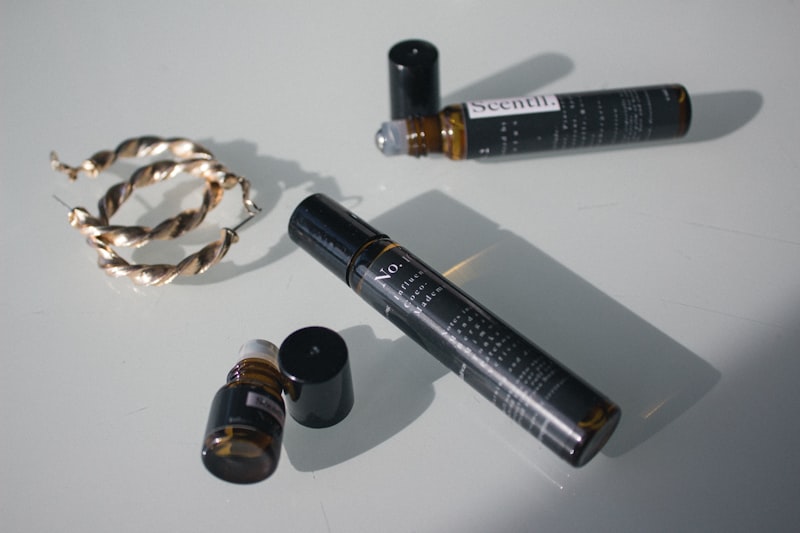What Are the Most Significant Achievements of Women in Science?
Consider Marie Curie, a name synonymous with scientific excellence. She was the first woman to win a Nobel Prize and remains the only person to win Nobel Prizes in two different scientific fields—Physics and Chemistry. Her pioneering work on radioactivity laid the groundwork for numerous advancements in medical treatments and nuclear energy.

In the realm of space exploration, Dr. Mae Jemison made history as the first African American woman to travel into space. Her mission aboard the Space Shuttle Endeavour in 1992 was a giant leap, not just for her career but for diversity and representation in space science.
Let’s not overlook the innovative work of Jane Goodall, whose studies on chimpanzees revolutionized our understanding of primates and offered profound insights into animal behavior and conservation. Her dedication has brought critical attention to environmental issues and animal rights.
These examples only scratch the surface. The impact of women in science extends across countless disciplines, each story a testament to perseverance and brilliance. From uncovering the mysteries of the universe to improving human health, their achievements continue to inspire and drive progress.
Trailblazers of Discovery: Celebrating the Pioneering Achievements of Women in Science
Take, for instance, Rosalind Franklin. Her work with X-ray diffraction was crucial in unraveling the structure of DNA. Franklin’s meticulous research and photographs provided the ultimate clues that led to the discovery of the double helix. It’s as if she handed over the blueprint for one of the most fundamental aspects of life itself.
Then there’s Katherine Johnson, whose calculations were essential to the success of the first American space missions. Her genius wasn’t just in solving complex equations but in believing in her own abilities amidst a sea of doubt. Imagine calculating trajectories by hand for space travel—it’s almost like navigating through a cosmic labyrinth!
And let’s not forget Jane Goodall, whose groundbreaking observations of chimpanzees reshaped our understanding of primate behavior and human evolution. Goodall’s work is akin to opening a window into the animal kingdom, showing us how closely intertwined we are with other species.
These women, among countless others, have redefined what it means to be a scientist. Their stories aren’t just about personal achievement; they’re about the courage to forge new paths, despite facing significant barriers. The next time you marvel at a scientific discovery, remember that many of the most dazzling breakthroughs were made possible by the trailblazing efforts of women who dared to dream and disrupt.
From Labs to Legends: The Most Impactful Contributions of Women Scientists
Take Marie Curie, for example. Her work on radioactivity didn’t just earn her two Nobel Prizes—it set the stage for a new era of scientific exploration and medical advancements. Imagine trying to unravel the mysteries of atomic energy with little more than a glass of radium and an iron will. That was Marie Curie’s reality, and her persistence illuminated paths in science we still follow today.
Or consider Rosalind Franklin, whose X-ray diffraction images provided the crucial data that led to the discovery of DNA’s double helix. Franklin’s role is akin to a photographer who captures the hidden beauty of a seemingly ordinary subject, revealing its extraordinary structure. Her images were the key pieces in a puzzle that changed our understanding of genetics forever.
And let’s not overlook Katherine Johnson, whose mathematical genius was essential for NASA’s success during the Space Race. Her calculations were the launch codes for astronauts to travel to the moon and back. Think of her as a human computer, but with the added ability to visualize complex trajectories in her mind—a skill that literally launched rockets.
These women scientists didn’t just contribute; they redefined what’s possible. They turned scientific pursuits into legends by pushing boundaries and defying expectations. Each breakthrough they achieved was a testament to their brilliance and an inspiration to all who follow in their footsteps.
Breaking Boundaries: How Women Have Revolutionized Scientific Research
Picture this: the scientific community once had a very narrow view of who could contribute to major discoveries. But then came women who challenged the status quo and broke barriers with their relentless curiosity and brilliant minds. Take Marie Curie, for instance. Not only did she pioneer research on radioactivity, but her achievements also earned her two Nobel Prizes—an unprecedented feat that shattered the glass ceiling in the scientific field.
Fast forward to modern times, and women are still making waves. Consider the work of Dr. Frances Arnold. Her innovative research in enzyme engineering has transformed the field of chemistry, leading to more sustainable manufacturing processes. It’s like she’s re-engineered nature itself to solve global challenges.

These remarkable achievements highlight that breaking boundaries isn’t just about pushing limits; it’s about redefining what’s possible. Women have demonstrated that the pursuit of knowledge isn’t confined by gender but is driven by passion, creativity, and determination. Their contributions not only advance science but also inspire the next generation of researchers to dream big and challenge the norms.
As we continue to celebrate these trailblazing women, it’s clear that their impact on scientific research is profound and far-reaching. They remind us that innovation thrives when diverse perspectives come together to forge new paths in the quest for knowledge.
Unveiling the Unseen: The Top Groundbreaking Innovations by Women in Science
Take, for instance, the work of Marie Curie. Her discovery of radioactivity not only earned her two Nobel Prizes but also laid the foundation for modern physics and medicine. Her relentless pursuit of knowledge in a field dominated by men shows just how crucial women’s contributions have been.
Then there’s Rosalind Franklin, whose meticulous work with X-ray diffraction led to the discovery of the DNA double helix. Imagine not having the blueprint for life itself! Franklin’s work was pivotal, even though she wasn’t initially recognized for her contribution.
Another standout is Dr. Katalin Karikó, whose research on mRNA technology was crucial in developing the COVID-19 vaccines. Her tireless efforts and innovative thinking have saved countless lives and highlighted how women’s groundbreaking research is directly impacting global health.
Let’s not overlook the incredible contributions of Ada Lovelace, who is often hailed as the first computer programmer. Her vision of computing machines went far beyond her time, setting the stage for modern computing and software development.
Leading the Charge: The Women Scientists Who Changed the Course of History
Take Marie Curie, for example. Her groundbreaking research on radioactivity wasn’t just about scientific curiosity—it was a beacon of hope and a game-changer for medical treatment. When she discovered radium, she wasn’t just adding a new element to the periodic table; she was laying the groundwork for treatments that would save countless lives. Can you fathom the level of dedication and intellect it took to achieve that?
Then there’s Rosalind Franklin, whose X-ray diffraction images provided the crucial clues to the structure of DNA. Without her, Watson and Crick’s famous double helix model might never have seen the light of day. It’s like she handed them the map to a treasure they didn’t even know existed. Her contribution was crucial, yet often overshadowed—proof that sometimes the most vital parts of history are those we don’t always see.
Ada Lovelace, on the other hand, was a pioneer in computing before computers were even a reality. She envisioned a machine that could perform any intellectual task, a concept that laid the foundation for modern programming. It’s almost poetic how she foresaw a future where machines could think and execute complex tasks, way before anyone else.
These women didn’t just make waves in their fields; they created tidal waves that reshaped the world. Their stories remind us that innovation often comes from the most unexpected places and that history is often changed by those who dare to dream big.
Historic Milestones: Key Achievements of Women That Shaped Modern Science
Fast forward to the mid-20th century, and we encounter the legendary Marie Curie. Curie’s groundbreaking work in radioactivity didn’t just win her two Nobel Prizes; it fundamentally transformed our understanding of atomic science. Her research paved the way for advancements in medicine, including cancer treatment through radiation therapy. Her legacy demonstrates how a single person’s relentless pursuit of knowledge can change the course of science.
Similarly, Rosalind Franklin’s contributions were crucial to unlocking the secrets of DNA. Though often overshadowed, her meticulous X-ray diffraction images were vital in revealing the double helix structure of DNA. This discovery didn’t just advance genetics; it reshaped our understanding of heredity and evolution itself.
And who could forget Katherine Johnson? Her mathematical expertise was instrumental in NASA’s early space missions. Johnson’s calculations ensured that astronauts safely reached their destinations and returned home. Her work helped break down racial and gender barriers, illustrating that talent and determination know no bounds.
These milestones are just glimpses into how women have shaped modern science. Their achievements remind us that the pursuit of knowledge is a collective endeavor, enriched by diverse voices and perspectives.
Heroines of Science: Notable Discoveries and Innovations by Women
Take, for instance, Marie Curie, who was the first woman to win a Nobel Prize and remains the only person ever to win Nobel Prizes in two different scientific fields: Physics and Chemistry. Her pioneering work on radioactivity not only advanced our grasp of atomic physics but also laid the groundwork for cancer treatments using radiation.
Then there’s Rosalind Franklin, whose X-ray diffraction images were crucial in uncovering the double helix structure of DNA. Though her contributions were initially overshadowed, her work has become a cornerstone of genetic research and biotechnology.
In another realm, Ada Lovelace is celebrated as the first computer programmer. Her vision of Charles Babbage’s early mechanical computer, the Analytical Engine, went beyond its current capabilities, foreseeing a future where machines could be programmed to perform complex tasks.
We shouldn’t forget the more recent heroes, like Dr. Frances Arnold, who won a Nobel Prize for her work on enzyme evolution. Her innovations have revolutionized how we produce everything from biofuels to pharmaceuticals, showcasing how modern science can harness nature’s processes for human benefit.
